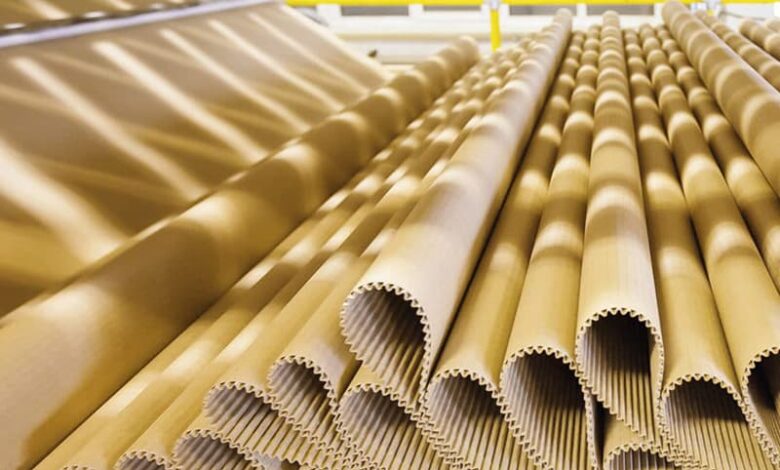The North America Containerboard Market is witnessing significant shifts driven by e-commerce growth, sustainability demands, and evolving packaging technologies. At the heart of this transformation stands Packaging Corporation of America (PCA), one of the leading producers of containerboard and corrugated packaging products in the U.S. PCA’s strategic direction offers an insightful lens into how companies are adapting to meet the challenges and opportunities of this dynamic landscape.
Strengthening Infrastructure Through Strategic Investments
Packaging Corporation of America has made large-scale capital investments in recent years to expand its containerboard production capabilities and improve operational efficiency. The company has continued to modernize its mills and facilities, such as the investment in its Phoenix site, which was designed to optimize both capacity and performance.
By upgrading equipment and expanding key facilities, PCA aims to meet the increasing demand from the e-commerce and logistics sectors. These infrastructure improvements not only allow PCA to maintain high-quality standards but also help in reducing downtime, increasing throughput, and cutting operational costs.
Focus on Cost Management and Pricing Strategies
A key component of PCA’s approach to maintaining profitability has been its careful management of costs and pricing. Amid rising input costs across the paper and packaging industry, PCA has implemented strategic price increases for both its containerboard and paper segments.
These pricing adjustments are designed not only to offset inflationary pressures but also to protect the company’s margins and deliver steady shareholder returns. PCA’s strong financial discipline and focus on operational efficiencies ensure that it remains resilient even during uncertain economic cycles.
Prioritizing Sustainability and Circular Economy Practices
Sustainability is no longer optional in the packaging industry — it’s expected. PCA has integrated environmental responsibility into its long-term strategy by focusing on renewable resources, recycling, and energy-efficient practices.
The company produces containerboard using a significant portion of recycled fiber, while also managing its virgin fiber sources through sustainable forestry practices. This blend helps meet consumer and regulatory expectations for environmentally friendly packaging while maintaining the strength and durability needed for shipping and logistics applications.
PCA has also implemented water and energy conservation programs across its mills, reducing its environmental footprint while improving cost efficiency. These efforts align with broader trends in the North American market, where customers increasingly prefer packaging partners committed to sustainable values
Innovation in Product Development and Material Science
To remain competitive, PCA has embraced innovation, particularly in product design and material development. One area of focus is the enhancement of lightweight containerboard grades that offer high strength while using less raw material. This not only reduces costs and environmental impact but also addresses the growing demand for efficient packaging solutions in the e-commerce space.
PCA is also exploring advanced coating technologies to improve moisture resistance and printability — key attributes for industries like food and beverage, electronics, and pharmaceuticals. The company’s R&D efforts are geared toward developing packaging solutions that can withstand harsh logistics environments while still being recyclable and biodegradable.
Leveraging Automation and Smart Manufacturing
Digital transformation is reshaping manufacturing, and PCA is investing in automation and data analytics to gain operational insights and drive productivity. Through smart manufacturing initiatives, the company monitors equipment performance in real-time, enabling predictive maintenance and minimizing unplanned downtime.
Automation also plays a role in improving packaging precision and reducing waste, helping PCA meet customer needs more efficiently. These technological advancements are particularly critical as the containerboard market becomes more customer-specific, with customized packaging solutions becoming a standard expectation.
Adapting to Market Dynamics and Consumer Expectations
The post-pandemic era has seen a surge in demand for flexible and resilient packaging. PCA’s decentralized structure and vertically integrated operations allow it to respond quickly to market fluctuations and customer needs.
From custom corrugated box solutions for small businesses to large-scale packaging programs for national retailers, PCA’s customer-centric approach has helped the company build long-term partnerships. This responsiveness, combined with its innovation pipeline, positions PCA well in a market that increasingly values speed, customization, and environmental accountability.
Challenges Ahead — And How PCA Plans to Tackle Them
Like the rest of the industry, PCA faces challenges such as rising raw material costs, labor shortages, and regulatory pressure on packaging waste. However, the company’s balanced approach to sustainability, operational efficiency, and technology adoption gives it the tools to navigate these hurdles effectively.
PCA is also keeping a close watch on alternative packaging materials and consumer trends. While plastics and hybrid materials offer competition, PCA’s eco-friendly fiber-based solutions continue to appeal to brands and consumers looking for greener alternatives.
Conclusion: A Strategy Rooted in Resilience and Innovation
Packaging Corporation of America is more than just a containerboard producer — it’s a forward-thinking leader helping to shape the future of packaging in North America. By focusing on strategic capital investments, sustainability, product innovation, and technological advancement, PCA is positioning itself to thrive in a rapidly changing market.
As the North American containerboard market grows alongside e-commerce, digital retail, and sustainable packaging mandates, PCA’s proactive strategies make it a key player to watch. The company’s ability to adapt, innovate, and deliver value in every box it produces highlights its pivotal role in the industry’s ongoing evolution.





Comments